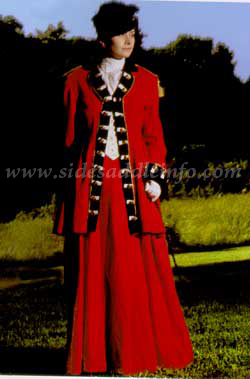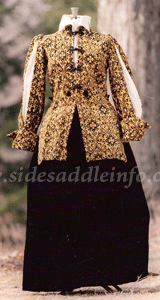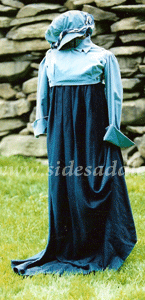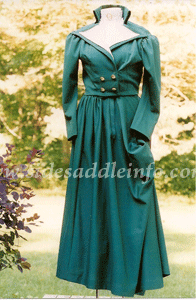THE ERA OF FULL SKIRTS
17th century to 1875


1652 An early habit of the Louis XIV period called for a velvet brocade jacket with “buttons, loops, bowknots and braid,” interpreted here with slashed sleeves. A sheer shirt with a “falling band”, cloth skirt, and black hat with plumes would have completed the outfit. This is one of the earliest outfits intended primarily for riding, and the masculine influence is undeniable
1795-1810 The Empire style habit was influenced by French Directoire styles. All fabrics in the original would have been light weight: highwaisted underdress and jacket in "pale blue, soft worsted woolen cloth"; habit shirt in sheer white fabric; and petticoats of silk or lawn. The straight-cut skirt was so long that it had to be held up or carried over the arm until on horseback. A system of tapes and tabs inside the skirt allowed it to be "tied up" (shortened) for walking or for use as a traveling costume.


1800-1815 Again borrowing from the gentlemen, this reproduction habit features the military look of fitted jacket, double lapels (revers) and brass buttons popular at the time. Underneath--a one-piece "jumper" worn over ruffled habit shirt. The long skirt of the original has been interpreted for modern use as a train, buttoned up or carried in the left hand for ease in walking. From a British fashion illustration.

©2000-2009 N.E.A. Sidesaddle Assoc. All rights reserved. No reproduction permitted.